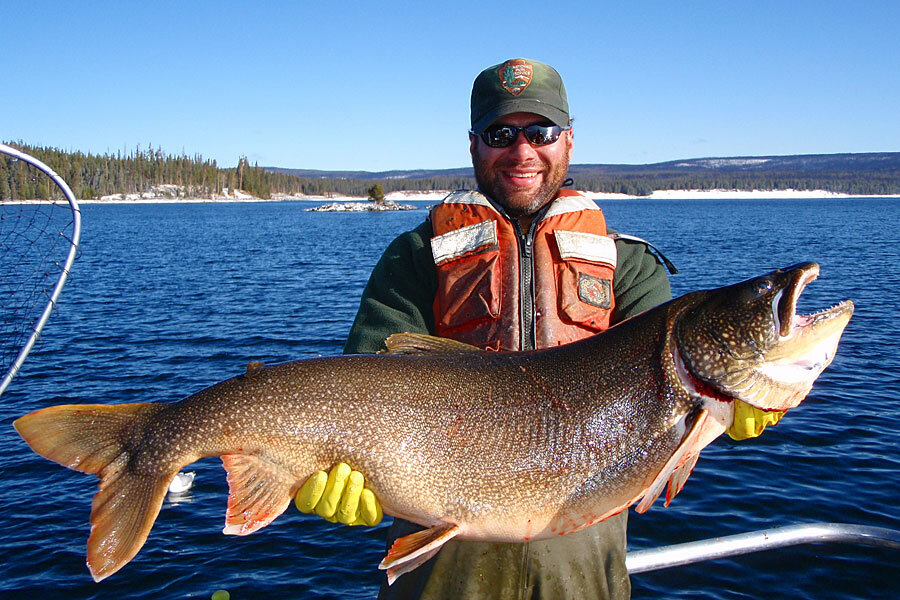Yellowstone trout declining. Time to celebrate?
Loading...
| Billings, Montana
A voracious species of trout that decimated a native trout population in Yellowstone National Park shows signs of decline following a costly and protracted effort to kill off the invading fish, government scientists and a conservation group said Tuesday.
Non-native lake trout were first discovered in Yellowstone Lake in 1994, after being illegally introduced to the 132-square-mile body of water that attracts visitors from around the world.
Crews have since netted and removed about 1.4 million of the fish in hopes of cutthroat trout populations rebounding. Adult lake trout in Yellowstone can top 30 pounds, living almost exclusively on a diet of cutthroat trout, according to researchers.
The netting costs about $2 million annually, drawing criticism that too much money is being spent to kill off a species that's highly prized by anglers elsewhere.
Backers of the removal effort insist it's worth the cost. Yellowstone cutthroattrout are considered a keystone animal in the country's first national park, providing food for 42 birds and mammals including grizzly bears, osprey and bald eagles. Prior to the first lake trout being found, the native trout supported a recreational fishery valued at $30 million annually in the early 1990s.
Whether that fishing economy can fully rebound is uncertain.
After years of scant improvement, the netting efforts finally have begun to show progress, according to scientists from the park and the conservation group TroutUnlimited.
The population of the invasive trout is beginning to decline, a recent analysis by researchers from Montana State University indicated. Meanwhile, the numbers of young cutthroat trout are increasing, laying the groundwork for a rebound for the smaller, native fish.
"I'm very encouraged by some of our recent successes," said David Hallac, chief of the park's science center. "The goal is to crash the population of laketrout to a point where they are no longer adversely impacting Yellowstonecutthroat trout."
Park officials sharply expanded the lake trout removal program in recent years, bringing in contract fishing companies that set tens of thousands of feet of gillnets to sweep up more of the fish. About half the cost of the program comes from outside sources.
Native trout sometimes inadvertently end up in the nets set for the invaders.
It's unlikely lake trout will be wiped out entirely, meaning some level of management will be required to keep them from again crowding out native fish, said Jack Williams, senior scientist for Trout Unlimited.
As lake trout numbers drop and fewer are caught — and more cutthroat trout die in the nets — fishery experts are trying to find new methods to control the invading population, Williams said.
That includes using electricity to destroy lake trout eggs in their spawning grounds, which should also reduce the costs of the program as the work focuses on a smaller area, Williams said.
Copyright 2014 The Associated Press. All rights reserved. This material may not be published, broadcast, rewritten or redistributed.







